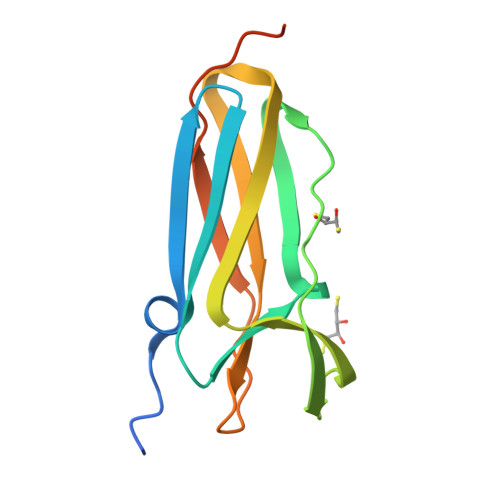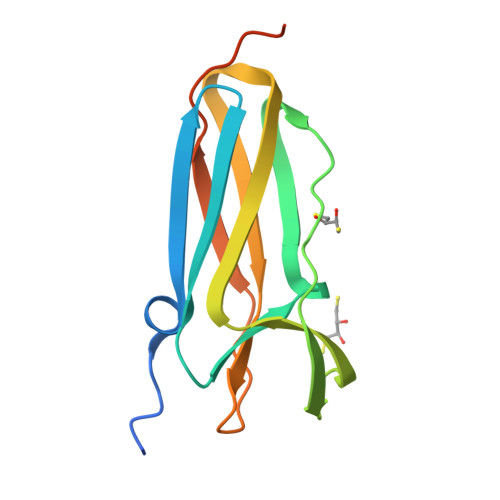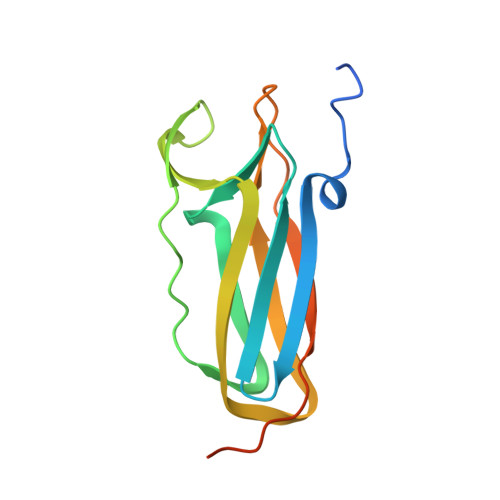Oxidation state-dependent protein-protein interactions in disulfide cascades
Mavridou, D.A., Saridakis, E., Kritsiligkou, P., Goddard, A.D., Stevens, J.M., Ferguson, S.J., Redfield, C.(2011) J Biological Chem 286: 24943-24956
- PubMed: 21543317
- DOI: https://doi.org/10.1074/jbc.M111.236141
- Primary Citation of Related Structures:
3PFU - PubMed Abstract:
Bacterial growth and pathogenicity depend on the correct formation of disulfide bonds, a process controlled by the Dsb system in the periplasm of Gram-negative bacteria. Proteins with a thioredoxin fold play a central role in this process. A general feature of thiol-disulfide exchange reactions is the need to avoid a long lived product complex between protein partners. We use a multidisciplinary approach, involving NMR, x-ray crystallography, surface plasmon resonance, mutagenesis, and in vivo experiments, to investigate the interaction between the two soluble domains of the transmembrane reductant conductor DsbD. Our results show oxidation state-dependent affinities between these two domains. These observations have implications for the interactions of the ubiquitous thioredoxin-like proteins with their substrates, provide insight into the key role played by a unique redox partner with an immunoglobulin fold, and are of general importance for oxidative protein-folding pathways in all organisms.
Organizational Affiliation:
Department of Biochemistry, University of Oxford, South Parks Road, Oxford OX1 3QU, United Kingdom.



















